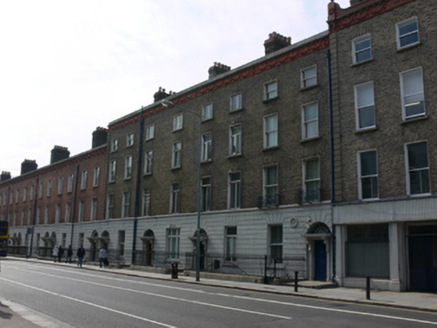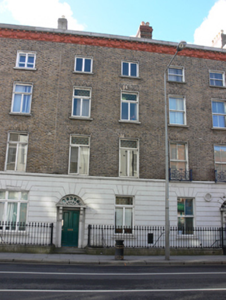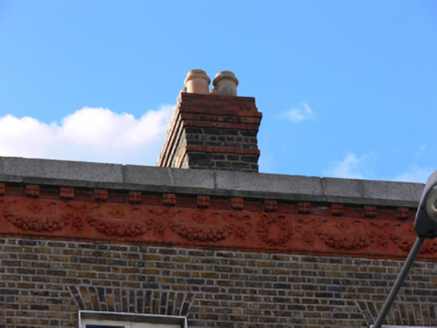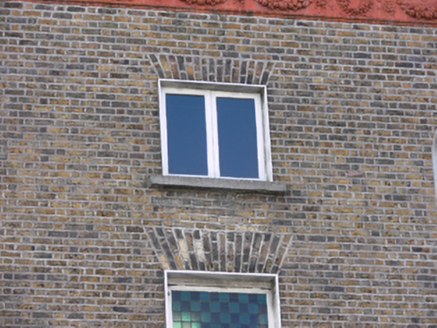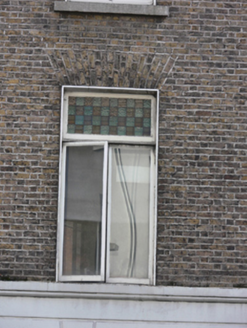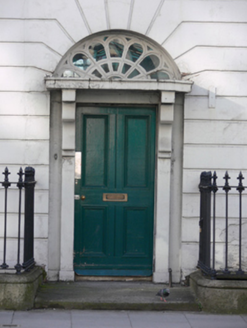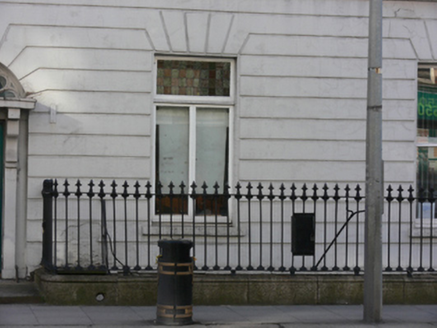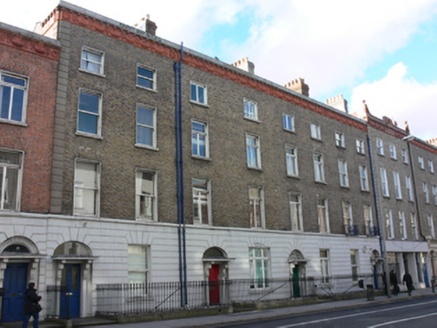Survey Data
Reg No
50020438
Rating
Regional
Categories of Special Interest
Architectural, Artistic, Historical, Social
Original Use
House
In Use As
Building misc
Date
1820 - 1840
Coordinates
316578, 233899
Date Recorded
11/03/2015
Date Updated
--/--/--
Description
Terraced two-bay four-storey over basement former house, built c.1830, now in use as part of college. M-profile pitched slate roof concealed behind parapet with ashlar granite coping and cornice on moulded brick corbels, moulded terracotta frieze having swag-and-wreath detail. Red brick and rendered chimneystacks with clay pots. Yellow brick, laid in Flemish bond, to walls, channelled render to ground floor and masonry plinth course over smooth rendered wall to basement. Square-headed window openings having timber casement windows with coloured glass awnings, raised render reveals and granite sills, moulded masonry sill course to first floor. Segmental-headed door opening having masonry doorcase with stepped console brackets to entablature, and timber panelled door and petal fanlight. Masonry step having cast-iron bootscrape, flanked by cast-iron railings on carved granite plinth wall enclosing basement well. Street fronted to Westland Row.
Appraisal
The soft brown brick façade is repeated in many of the neighbouring buildings, lending a sense of continuity to the streetscape, which is enhanced by a shared fenestration arrangement, parapet height and detailing within this group. The well-executed later terracotta frieze lends textural and tonal variation. The fine cast-iron railings lend artistic interest to the composition, attesting to the artisanship involved in the production of ironwork during the nineteenth century. Built originally as domestic residences, the houses on this street were soon adapted to include commercial businesses, however this one remained in residential use and was occupied by Mrs Catherine Doolin in 1862. Westland Row was opened in 1773, and widened in 1792. It retains a number of late Georgian and early Victorian houses, creating an interesting and varied historic streetscape.
